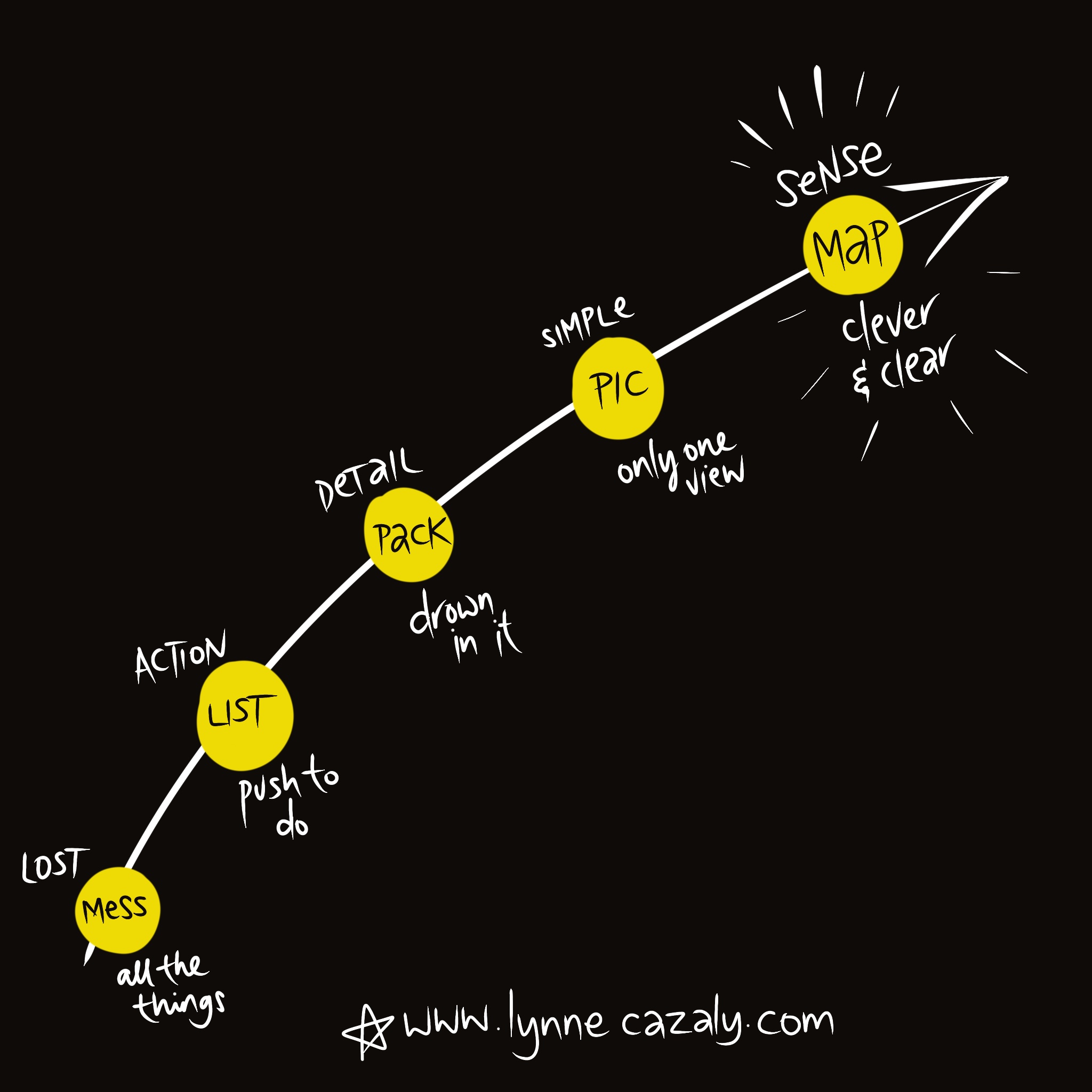When overwhelmed people deliver underwhelming presentations
 Thursday, March 5, 2020 at 5:06PM
Thursday, March 5, 2020 at 5:06PM  We’ve seen them and been bombarded by them, those dense presentations of data, dot points, slabs of text and diagrams with .... aarrghhh our brain is fried! Sometimes we overwhelm people, overloading them with too many ideas and messages, jamming it all in one deck or pack of information.
We’ve seen them and been bombarded by them, those dense presentations of data, dot points, slabs of text and diagrams with .... aarrghhh our brain is fried! Sometimes we overwhelm people, overloading them with too many ideas and messages, jamming it all in one deck or pack of information.
It doesn’t make sense. This can drown people; not save them.
So beware; if you’re overwhelmed, busy, running from meeting to meeting, struggling to get clarity in your own mind ... what you create and deliver to others may well be just as messy and overwhelming. It could turn out to be underwhelming though, disappointing, confusing.
It's then easier to just ignore and disengage.
In times of major change, when people are waiting to hear, needing to see and curious to know what the heck is going on, it’s vital we manage our own state of information overload and cognitive load so we're not just passing the chaos on to everyone else.
We’ve got to 'get our head around' our own information before we can begin to think about transferring it to others. Blog posts included 😁
Time spent making things clearer ... is time very well spent.




















